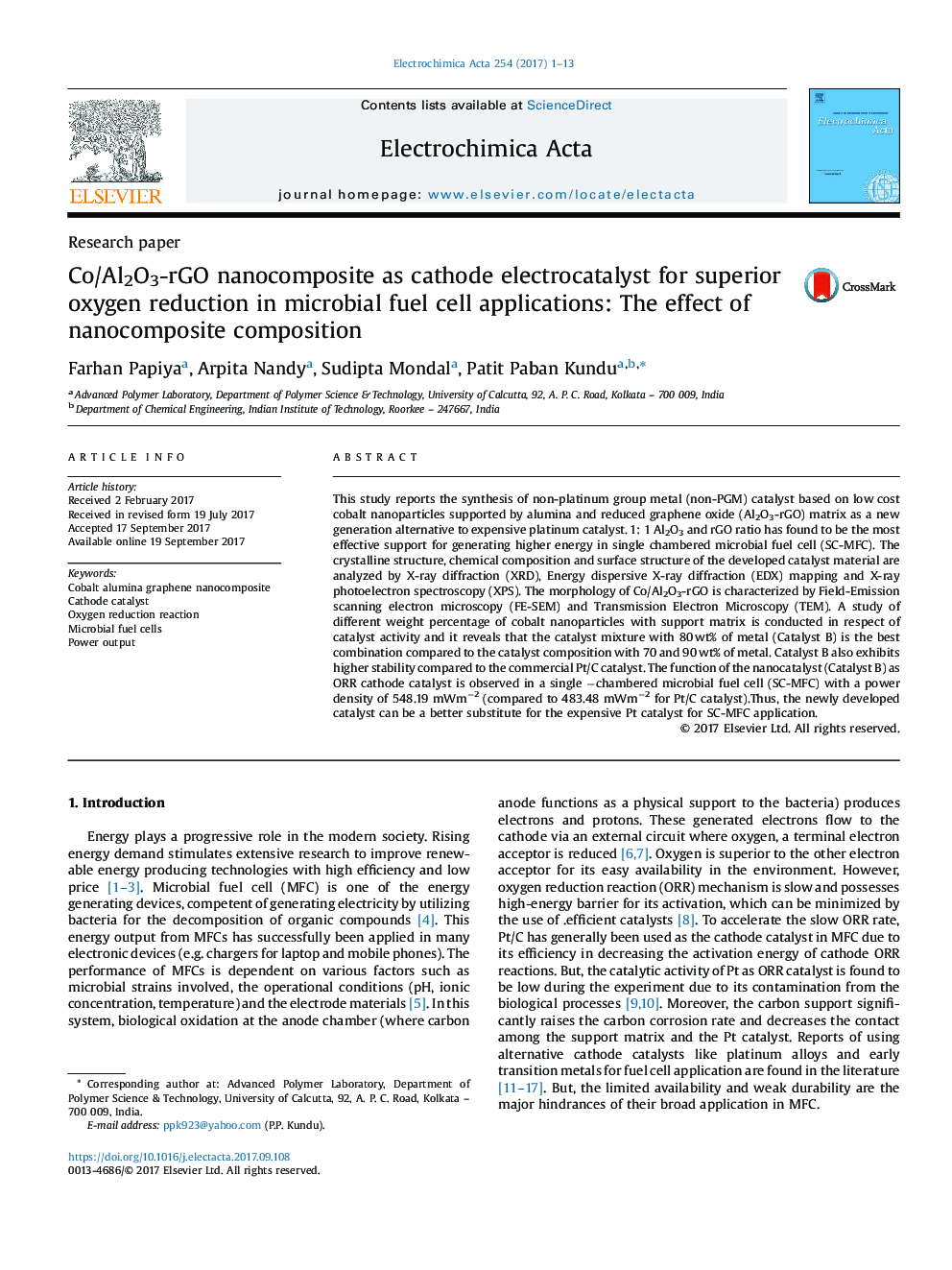| کد مقاله | کد نشریه | سال انتشار | مقاله انگلیسی | نسخه تمام متن |
|---|---|---|---|---|
| 6469777 | 1424103 | 2017 | 13 صفحه PDF | دانلود رایگان |

- Co based transition metal nanocatalyst employed as an alternative to noble metal catalyst for oxygen reduction.
- Alumina (Al2O3) and reduced graphene (rGO) emerged as the effective catalyst support.
- The electrode modified by Co based nanocatalyst exhibited an excellent electro-catalytic activity for oxygen reduction reaction (ORR).
- Co80/(Al2O3)10-rGO10 showed better MFC result compared to Pt/C.
This study reports the synthesis of non-platinum group metal (non-PGM) catalyst based on low cost cobalt nanoparticles supported by alumina and reduced graphene oxide (Al2O3-rGO) matrix as a new generation alternative to expensive platinum catalyst. 1: 1 Al2O3 and rGO ratio has found to be the most effective support for generating higher energy in single chambered microbial fuel cell (SC-MFC). The crystalline structure, chemical composition and surface structure of the developed catalyst material are analyzed by X-ray diffraction (XRD), Energy dispersive X-ray diffraction (EDX) mapping and X-ray photoelectron spectroscopy (XPS). The morphology of Co/Al2O3-rGO is characterized by Field-Emission scanning electron microscopy (FE-SEM) and Transmission Electron Microscopy (TEM). A study of different weight percentage of cobalt nanoparticles with support matrix is conducted in respect of catalyst activity and it reveals that the catalyst mixture with 80Â wt% of metal (Catalyst B) is the best combination compared to the catalyst composition with 70 and 90Â wt% of metal. Catalyst B also exhibits higher stability compared to the commercial Pt/C catalyst. The function of the nanocatalyst (Catalyst B) as ORR cathode catalyst is observed in a single âchambered microbial fuel cell (SC-MFC) with a power density of 548.19 mWmâ2 (compared to 483.48 mWmâ2 for Pt/C catalyst).Thus, the newly developed catalyst can be a better substitute for the expensive Pt catalyst for SC-MFC application.
234
Journal: Electrochimica Acta - Volume 254, 10 November 2017, Pages 1-13